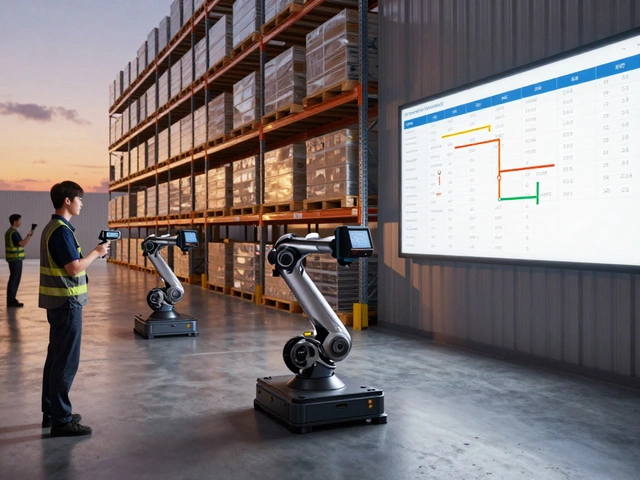Warehouse Software: What It Is and How to Pick the Best One
If you run a warehouse, you already know how chaotic it can get without the right tools. A good warehouse software (often called a WMS) takes the guesswork out of tracking stock, routing picks, and keeping the floor organized. In this guide we’ll break down the basics, show you the main types of WMS, and give you a quick checklist to help you decide which system fits your operation.
Understanding Warehouse Software
At its core, warehouse software is a digital system that manages every movement of goods inside your facility. It tells you where each pallet sits, which items need to be packed, and when it’s time to reorder. Modern WMS platforms also connect to your transport management system (TMS) and ERP, creating a seamless flow from supplier to customer.
There are four common WMS models you’ll see in the market:
- Standalone WMS: A single‑purpose tool focused solely on warehouse tasks. Good for small to mid‑size sites that don’t need deep integration.
- ERP‑embedded WMS: Built into a broader ERP suite. Ideal if you already use an ERP and want everything under one roof.
- Cloud‑based WMS: Hosted online, updates automatically, and scales easily. Perfect for businesses that want low upfront costs.
- Hybrid/on‑premise WMS: Runs on your own servers but can talk to cloud services. Chosen when data security or custom workflows are critical.
Each model has strengths: cloud solutions are fast to set up, while on‑premise systems give you full control over data. Think about your IT team, budget, and growth plans before leaning toward one.
How to Choose the Right System
Follow this short checklist to narrow down your options:
- Define your needs: List the top pain points – e.g., inaccurate inventory counts, slow pick times, or missed delivery windows.
- Check integration: Make sure the WMS can talk to your existing ERP, TMS, or e‑commerce platform. The fewer manual data transfers, the smoother the operation.
- Scalability: Ask if the software can handle more SKUs, additional locations, or higher order volumes without a major overhaul.
- User experience: Demo the interface with the people who will use it daily. A clunky UI will slow everyone down.
- Cost structure: Look beyond the license fee. Consider implementation, training, support, and any per‑user or per‑transaction charges.
- Support and updates: A vendor that offers regular upgrades and responsive help desk service can save you headaches later.
When you evaluate the posts on our site – like the “Types of Warehouse Management Systems” guide – you’ll see real‑world examples of each model in action. Those articles also include tips on what to watch out for with automation, barcode scanning, and AI‑driven demand forecasting.
Bottom line: the best warehouse software is the one that solves your biggest bottlenecks, fits your tech stack, and grows with your business. Take the time to test a few demos, involve your floor staff, and map out the total cost of ownership. With the right WMS, you’ll cut errors, speed up shipments, and free up space for more inventory.
Ready to start your search? Use the checklist above, read our detailed posts, and you’ll be on the road to a smoother, smarter warehouse in no time.
March 25, 2025
Evelyn Wescott
0 Comments
Discovering the right software for warehouses can significantly enhance efficiency by streamlining inventory management, optimizing space, and improving operational flow. This article explores popular software solutions that cater to various warehouse needs, from Warehouse Management Systems to Inventory Control Software. Dive into practical tips and insights on choosing the best tools for your warehouse. Learn how advanced analytics and automation are paving the way for smarter warehouse operations.




